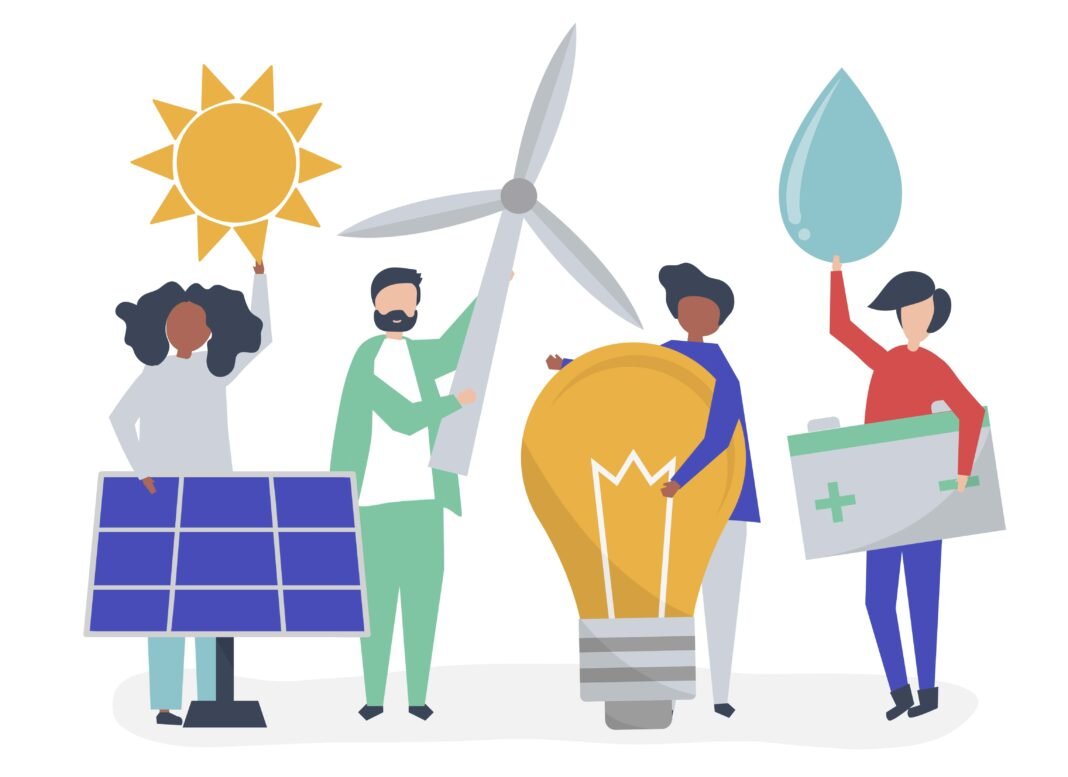In the current chaotic geopolitical and environmental climate, clean energy is becoming a crucial component for national resilience.
As the global power grid endures heightened stress from extreme weather conditions, cyber threats, and geopolitical instability, the recent widespread blackout across the Iberian Peninsula serves as a stark warning the world’s energy infrastructure is at risk.
On April 28, 2025, Spain, Portugal, and parts of France and Andorra were engulfed in darkness, disrupting transportation, communication, and essential services.
In these pivotal times, advocating for clean-energy is not solely about environmental sustainability but also about survival.
Grasping the Energy Trilemma
Historically, power systems have developed around two primary principles affordability and ecological sustainability. However, recent occurrences have brought energy security back into the spotlight.
The energy trilemma fairness, security, and sustainability illustrates the intricately challenging of establishing energy systems that equitably serve people, function reliably, and remain ecologically responsible.
Clean-energy, especially renewable sources such as solar, wind, and hydropower, presents a unique harmony among these three priorities.
While solar panels reduce carbon emissions, they also lessen reliance on unstable fossil fuel markets. Furthermore, the decentralized characteristics of renewables aids in democratizing power access, moving energy fairness closer to realization.
Foundations of a Resilient Clean Energy Future
Four Foundations of a Resilient Clean-Energy Future
-
Decentralize Power Generation
Conventional power plants concentrate vulnerabilities in a limited number of locations. In contrast, clean technologies such as rooftop solar installations and community wind farms disperse power generation over larger areas.
A recent IEEE study modeling hurricane effects on the U.S. grid found that decentralization significantly decreased load shedding during periods of peak demand.
Falling technology prices further bolster this transition. In just 2024, solar panel costs fell by 21%, while battery storage expenses dropped by 40%. T
hese economic developments facilitate widespread implementation and enhance resilience through diversification.
2. Diversify Energy Sources
Clean-energy systems that harness multiple renewable sources such as hydropower, solar, wind, and geothermal can stabilize supply across varying weather conditions and seasons.
For example, solar energy is abundant during daylight, while wind energy can often provide support at night or during inclement weather.
Hybrid systems lower the risk of total service failure. Complementary sources also enable intelligent grid solutions and real-time demand management, making outages less frequent and recovery times faster.
3. Emphasize Grid Flexibility and Storage
A robust clean-energy framework heavily depends on incorporating flexible storage solutions.
Batteries, pumped hydro systems, and hydrogen fuel cells offer backup during production shortfalls.
Additionally, smart grid technologies enable energy systems to redirect power to areas of highest need, reducing disruption during outages.
Advanced storage options also serve as a safeguard for essential infrastructure, ensuring that hospitals, data centers, and emergency services can operate seamlessly, even when the grid experiences difficulties.
4. Foster Innovation and Policy Synchronization
Governments, utilities, and private investors must give precedent to clean-energy in their long-term strategies.
Regulatory synchronization is crucial, particularly in establishing incentives for renewable integration and energy storage.
Cross-border cooperation especially within the European Union can facilitate national efforts towards a more robust, continent-wide energy framework.
Moreover, global clean-energy financing must be significantly increased. The OECD has highlighted that policy reforms, public-private collaborations, and risk mitigation strategies are essential to mobilize the resources needed for this transition.

The Argument for Resilient Power Systems
As the lights extinguished across Spain and Portugal, residents relied on mobile phones to navigate through the darkened streets.
Transportation systems halted, hospitals operated on limited backups, and internet connectivity became inconsistent.
The Portuguese grid operator E-Redes attributed the outage to an “issue with the European electricity system,” indicating that the repercussions of energy instability extend beyond national borders.
Spain’s grid operator Red Electrica quickly coordinated with energy companies to restore power.
However, this event underscores a broader concern centralized and fossil-fuel-dependent systems are particularly susceptible to single points of failure.
In contrast, distributed clean-energy sources provide the redundancy and adaptability that conventional systems lack.
Expert Editorial Comment
The blackout that affected the Iberian Peninsula served as a stark reminder. It unveiled the vulnerabilities of our existing energy systems and underscored the pressing need for change.
While traditional infrastructures are susceptible to cascading failures, distributed and diversified clean-energy frameworks provide inherent resilience.
Rather than waiting for the next crisis to act, nations must begin future-proofing their energy sectors now.
Clean energy is not just an environmental choice it is a national security imperative. In an era marked by unpredictability, embracing clean-energy can lead us to a safer, more resilient, and sustainable future.

